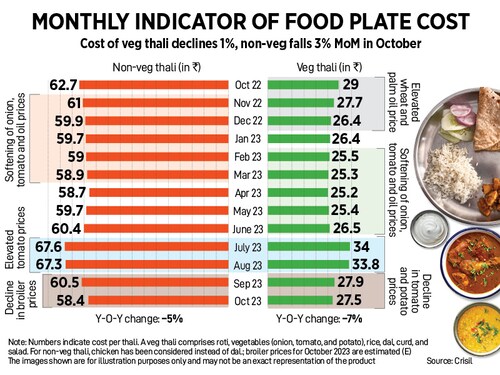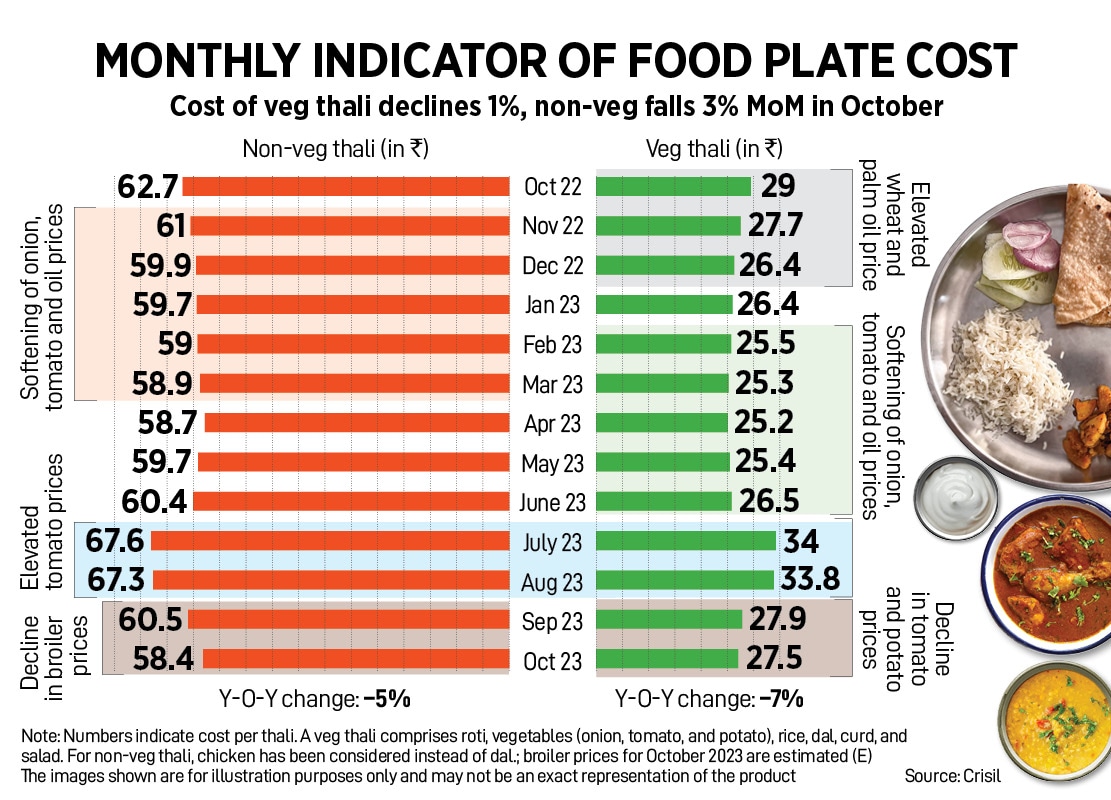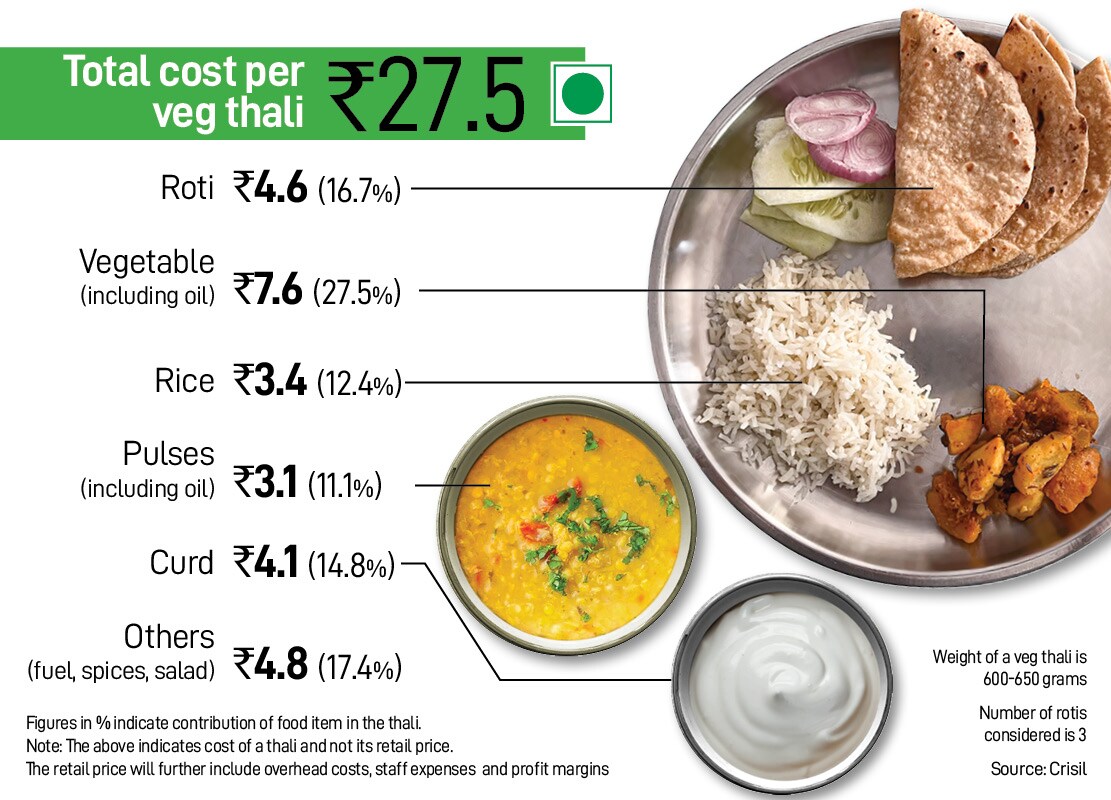How India Eats: Potato, tomato, chicken prices make thali cost cheaper in Oct
Raging onion prices, however, remains a key concern



After tomato, it is the time of onion now to go red as its prices have been skyrocketing in last few weeks. With decline in tomato, potato, chicken and cooking gas prices, estimated average cost of both vegetarian and a non-vegetarian thalis have slipped in October. However, swelling onion and pulses prices capped the fall in overall thali prices in the month.
The average cost of a vegetarian thali was Rs27.5 in October, which is around 1.4 percent lower than Rs27.9 in previous month, based on an analysis by Crisil. Compared to October last year, vegetarian thali got cheaper by Rs1.50 or 5.2 percent.
Similarly, average cost of a non-vegetarian thali where dal (pulses) is replaced by chicken (broiler) also cooled off in October falling by Rs2.1 or 3.4 percent from previous month to Rs58.4. In the same month last year, average cost of a non-vegetarian thali was Rs62.7. So, non-vegetarian thali cost 7 percent cheaper in October in a year.
The average cost of preparing a thali at home is calculated based on input prices prevailing in north, south, east, and west India. Monthly change reflects the impact on the common man’s expenditure. The data also reveals the ingredients (cereals, pulses, broilers, vegetables, spices, edible oil, cooking gas) driving changes in the cost of a thali.
A sharp decline in potato and tomato prices by 21 percent and 38 percent respectively year-on-year in October drove both the thali costs lower. However, non-veg thali price declined faster as the price of chicken is estimated to have softened 5-7 percent year-on-year over a high base. Chicken or broiler prices contribute 50 percent to a non-veg thali cost.
Cooking gas which contributes 14 percent and 8 percent of the total cost of the veg and non-veg thali, respectively also helped. The price of a 14.2 kg LPG cylinder fell to Rs903 from Rs1,053.
Latest data shows retail inflation cooled off to a three-month low in September to 5.02 percent but is still above Reserve Bank of India’s target of 4 percent. Food price inflation rose 6.56 percent in September compared to 9.94 percent in August. Food inflation accounts for nearly half of the overall consumer price basket.

Raging prices of onion is a key concern, rising from Rs34 per kg in the first half to Rs40 per kg in the second half. On an average, onion prices are 25 percent higher year-on-year due to lower kharif output estimated in 2023. A demand-supply mismatch, with erratic monsoons disrupting the sowing of summer crops, alongside sticky demand have made onion prices higher.
The government has, however, swung into action with export duties on onions, minimum export prices and offloading buffer stocks, although prices are yet to cool.
According to Nomura, higher onion prices will be partly reflected in the October CPI inflation or retail inflation with November likely to see a fuller impact. “Going by past episodes, the surge should start correcting after December. Alongside a rise in broader vegetable prices in October, we expect CPI inflation to rise to 5.3 percent YoY from 5 percent in September, with headline inflation tracking 6 percent in November/December, before moderating next year," Nomura economists say.
Crisil estimates thali prices may reverse in November, if higher onion prices persist. Onions account for 10 percent share in the total cost of a veg thali. Price of pulses, accounting for 9 percent share in the total cost of a veg thali, also increased 19 percent year-on-year.
(Forbes India"s monthly series "How India Eats" takes a look at how the average price of a food plate in India changes every month, indicating the impact on the common man"s expenditure, by analysing the Indian thali)
First Published: Nov 06, 2023, 10:57
Subscribe Now